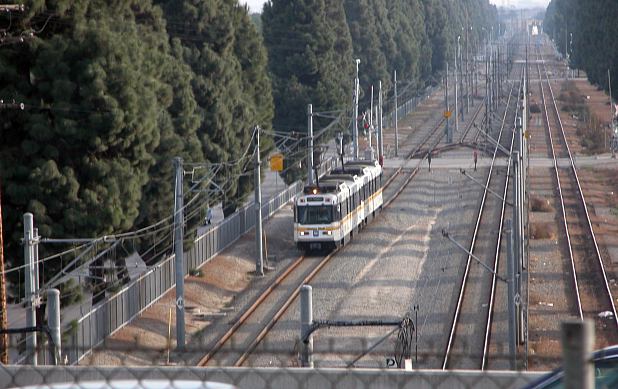Breakdowns and delays plague Metro Blue Line
"As officials build mass transit lines at a rapid clip, Los Angeles County's oldest and most-used light-rail system has been breaking down with alarming frequency.
"The Blue Line from Long Beach to downtown L.A. — one of the nation's busiest light-rail routes, with 26 million annual riders — has suffered a rash of maintenance problems that have left commuters who rely on the service facing major delays."

"As officials build mass transit lines at a rapid clip, Los Angeles County's oldest and most-used light-rail system has been breaking down with alarming frequency.
"The Blue Line from Long Beach to downtown L.A. — one of the nation's busiest light-rail routes, with 26 million annual riders — has suffered a rash of maintenance problems that have left commuters who rely on the service facing major delays."

Mike Clantz [far end of pit] inspects a Blue Line car in Long Beach. Deferred maintenance has led to an increase in delays on the Blue Line this year. (Photo by Gary Friedman, Los Angeles Times)





















































